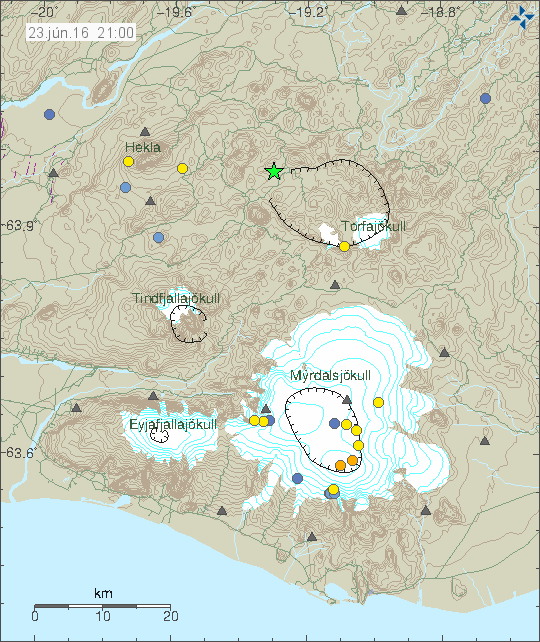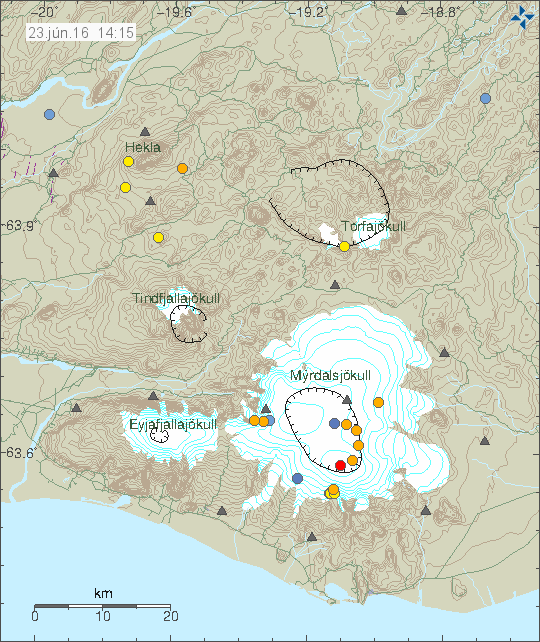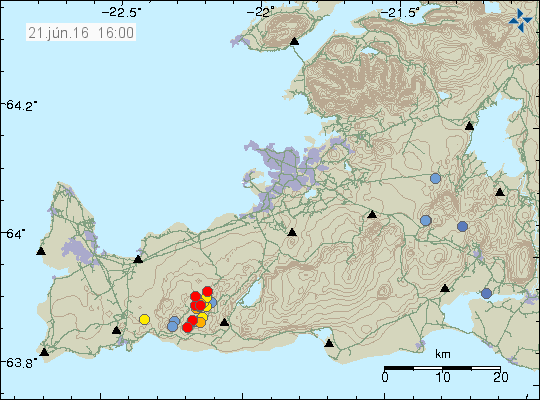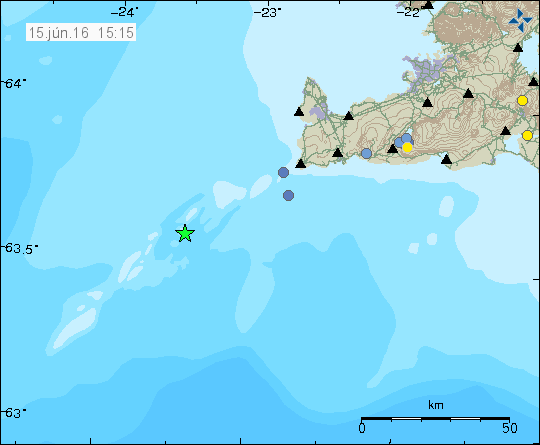Today (30-June-2016) three earthquakes took place in the root system of Eyjafjallajökull volcano I think. The most depth for those earthquakes was 14,3 km and the most shallow one 1,3 km. The largest magnitude was 1,1 the other two earthquakes had the magnitude of 0,7. Nothing to worry about magnitude wise.

The earthquake activity close to Eyjafjallajökull volcano (three yellow dots). Copyright of this image belongs to Iceland Met Office.
Eyjafjallajökull volcano extends to this area, however at this area there are no surface craters. If there where they are long lost due to erosion. Unlike many other volcanoes, Eyjafjallajökull volcano does not have an extensive fissure swarm extending outwards for it, that should limit the path the magma can travel in theory. While I am not expecting any type of eruption from Eyjafjallajökull volcano in near future. If this earthquake activity continues I might have to review that outlook. I don’t expect this earthquake activity to continue, since next eruption in Eyjafjallajökull volcano won’t happen (based on my model) until the year 2199 at the earliest.
It is also question of this earthquake activity belongs to Vestmannaeyjar volcano system. Over the past few years deep earthquakes have been taking place there at regular time. Not many, just one or two at the time.






